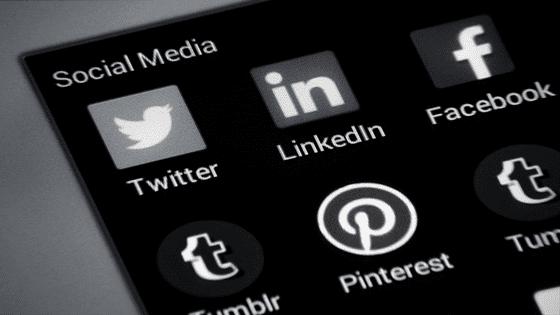Social media is crucial for small business marketing, not only it is a free marketing tool, but also a channel to engage and retain customers. Choosing a social media channel for business should be based on the target audience you are trying to reach as well as your Business goals and values. For example, an upcoming freelancing marketplace for professionals in Australia, 2hats, is utilising Instagram to reach millennials, LinkedIn for B2B lead generation, Twitter to reach industry Professionals, and Facebook as a point of contact for customers. Although target audience of your brand is not what it is about, so leave a comment below if this is something you are interested in and I will cover in in my nest article.

So, let’s shed some lights on the possible social media channels you might consider for your business:
Instagram is a highly visual platform that evolves around aesthetically pleasing photos and videos to showcase personality and emotions. Recently introducing “Stories” Instagram is gaining a competitive advantage including similar if not the same features as Snapchat to complement the platform. Rapid growth of Instagram and its engagement rates that are 58 times higher than on Facebook, are attracting businesses to this social media network.
Though Instagram might seem to be a platform more suitable for Fashion and Beauty brands, it is can be utilised by almost any businesses aiming to communicate brand experience through visuals. However, content creation for Instagram is very demanding, requirement large time and money investments. Use this social network if you have determination and want to connect with your target audience through visual communication.
Facebook is a must-have for every business. Through what other social media channel your business can reach over one billion people, chat directly with your customers and share any form of content you would like? Facebook is the largest English social media network and it is hard to imagine a business that does not have a Facebook page set up.
It is typically simple to manage Facebook pages with created or curated content. The diversity of content on Facebook allows your brand to share anything from snackable text posts to videos.
Snapchat
Snapchat is another visual social media network, but unlike its competitors, content on Snapchat deletes itself. Users can send photos and videos at the 10 seconds the longest to each other or post to public stories. It is becoming a widely popular social networking channel for generation Z.
Use Snapchat if you would like to reach younger generations of consumers and share interactive content. It does take some time to wrap your head around it, especially with many new features expected to be rolled out soon. But once you get a hold of it and is ready to dedicate a considerable amount of time for it, the opportunities are endless.
Originally used as an inspiration board for creative industries to share and curate content, Pinterest is great for every artistic industry. Users share originally created content, pin and re-pin posts, create albums and mood boards. Pinterest community largely consists of artists and those interested in topics such as photography, fashion and DIY, with a large split of females at a rate of 4 to 1.
Pinterest is best for Fashion, Beauty, Design, Travel and other creative industries related brands. Use this platform if you want to reach creative community and have visually stunning visuals to share.
Despite all urges of Twitter’s revenue and user base loses, the platform stays highly relevant in Business-to-Business industry. Its 140 characters limit is not for light hearted, but makes it so pleasing for those who does not like writing long articles and posts. Use Twitter to grow your personal brand and to connect with other professionals and businesses. It is great to keep your community updates with short posts, quick news and links to external sites and does not require huge time investments compared to a majority of other social media channels.
Google+
As Google’s proposed alternative to Facebook, it is a more professional version of the social networking site. Either for personal or business profile branding, it is a great channel to keep your business leads informed and engaged. It can also be integrated with other Google products, which is the most enticing for the active Google+ users.
It is often used to syndicate a feed of content, sharing latest blog posts, news and curated content. Google+ is a great platform to connect with customers for Business-to-Business leads, where Facebook might seem as an unprofessional channel to reach out to your customers.
LinkedIn is the online analogy to the old-fashioned professional networking. Building connection is everything as the platform does not allow to contact users outside of 3rd connections. Based on a personal or Company profile, your page is your extended resume, including professional background, interest, education and much more. When focusing on building Company page, it is great for job-posting, company profile and professional and employee engagement features. Alternatively, it is great for personal branding and especially for B2B service providers and freelancers. Use it to connect with experts in your field, build a personal brand and to generate new business leads.
YouTube
Did you know that every minute, over 100 hours of video are uploaded to YouTube, it has been found that more videos are uploaded to YouTube in 60 days than the 3 major networks created in 60 years. There are over one billion people using YouTube and it is the second most used search engine, which makes it more popular than Bing or Yahoo. Hearing this you must be convinced that utilising YouTube is indeed worth to consider. However, despite all the opportunities, a popularity of YouTube also makes is very competitive for newcomers.
YouTube can be best used for businesses to share educational and how-to video content if you are after building a personal brand, or to share behind-the-scenes videos of your business. YouTube does demand time and dedication, but it is not as hard as it seems. You do not need expensive equipment to pull it off, a regular smart phone camera will do just fine. The audience on YouTube is very diverse, so that your business can connect with literary any audience out there!
Medium
And of course, Medium! How could I forget about it. I have just started using Medium recently, but can certainly say that it is an amazing platform for business owners who are willing to invest their time in writing. Use it for PR opportunities, syndicate your business or personal blog, or even expand your professional network. Medium combines a power of publicity and social sharing, which makes a killer combination for achieving large media exposure.
While a goal of many businesses is to land in major media outlets, it may be challenging to get through to publishers at first. Starting with Medium to build a considerable profile will ease pitching to media outlets once gaining some online presence.






















